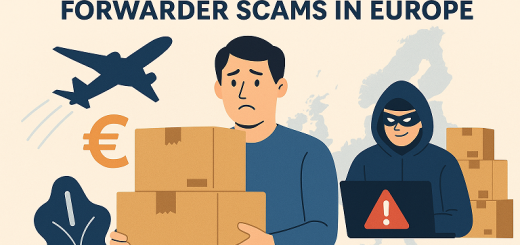Ultimate Guide to Cheap Shipping from China to the U.S.: Consolidated Freight Options (2025)
Introduction
As international trade evolves in 2025—with rising tariffs and fluctuating freight markets—finding the cheapest way to ship from China to the U.S. has become critical for importers. Especially for European and North American users consolidating multiple suppliers into single shipments, understanding consolidated freight options—LCL and shared FCL—offers substantial cost savings. This guide walks through rate benchmarks, mode selection, tariff context, consolidation strategy, and practical tips to minimize shipping spend and optimize logistics.
1. Understanding Consolidated Freight: LCL and Shared FCL
LCL (Less-Than-Container Load): Ideal for smaller shipments under ~15 CBM. Cargo from multiple shippers is consolidated into one container. Often charged per CBM or per W/M (weight/measurement), with base ocean freight plus origin/destination handling and documentation fees. Typical LCL rates range from $60–150 per CBM or about $1/kg, depending on service speed and destination.[turn0search1]turn0search7]turn0search11]
FCL (Full Container Load): You or your group share or book an entire 20ft or 40ft container. From China to the West Coast, a 40ft container costs approx. $3,200–$5,500 depending on the route and season; East Coast rates are slightly higher.[turn0search1]turn0search6]turn0search0]
2. Which Consolidation Mode Is Cheapest, and When?
| Mode | Volume Range | Estimated Cost | Best For |
|---|---|---|---|
| LCL | 1–15 CBM | $60–150/CBM (~$1/kg) | SMEs, small inventory |
| Shared FCL | 10–20 CBM | ~$2,000–5,500 per container | Split container costs |
| Full FCL | 15+ CBM | $2,300–3,950 (20ft), $3,500–5,500 (40ft) | High-volume shipments |
Analyses show FCL is most economical for volumes over ~15 CBM, while LCL is best for smaller, flexible lots. Shared FCL can bridge that gap efficiently.[turn0search1]turn0search11]turn0search10]
3. 2025 Market Context: Tariffs, Rate Volatility, and Timing
Tariff Shifts
Tariffs on Chinese goods dropped from 145% to ~30% following trade negotiations, but the U.S. also ended duty-free thresholds for parcels under $800 starting July–August 2025—impacting air or courier imports. Consolidation avoids multiple small shipments that now incur duties individually.([turn0news20]turn0news14])
Rate Trends
Ocean rates peaked around $6,000+ per container in mid-2025, then declined rapidly to around $2,500 per 40ft on China–West Coast routes. Spot pricing softened as import demand waned.([turn0news22]turn0news21]turn0news23])
Why Timing Matters
Avoid late bookings during peak season surcharges. Secure consolidated space early—importers who pre-booked avoided rate hikes up to $2,000+ per container.([turn0search6]turn0news23])
4. Detailed Cost Benchmarks
- LCL Shipping: Estimated at $50–150 per CBM, plus consolidation/deconsolidation fees ($100–300 total). Transit: ~23–35 days to U.S. West Coast, longer for East Coast.([turn0search1]turn0search11]turn0search7])
- Shared or Full FCL:
- 20ft container: $2,300–3,950
- 40ft container: $3,500–5,500 for West Coast, ~$5,100+ for East Coast.([turn0search1]turn0search6]turn0search3])
- Air Freight: ~$3.50–7.00/kg for freight shipments; express couriers around $6–12/kg. Air is costly for volume >150kg.([turn0search7]turn0search9]turn0search0])
In most cases, LCL offers best flex-cost, and FCL yields unbeatable economies of scale for larger volumes.
5. Consolidation Secrets: How to Save Even More
- Bundle multi-supplier shipments into one LCL or shared FCL booking.
- Optimize packaging: compact cartons, palletize, and reduce void space to lower CBM charges.([turn0search11])
- Choose port pair smartly: Shanghai/Ningbo → West Coast often cheaper than East Coast via canal.
- Negotiate forwarder rates: Frequent consolidation forwarders often offer lower LCL rates than liner companies.
- Audit freight invoices: Many importers recover 5–8% from billing discrepancies or overcharges.([turn0search6]turn0search11])
- Consider DDP or door-to-door if you prefer predictable cost over FOB complexity.
6. Practical Scenarios
Scenario A: Less than 10 CBM (LCL Best Option)
Importing 8 CBM from multiple factories. LCL cost: 8 × $80/CBM = $640 plus handling fees ($150). Total ~$800. Air or express would exceed $2,000.
Scenario B: Shared FCL (~12 CBM)
Pooling with another importer to book a 20ft FCL at ~$3,000. Your cost share: ~$1,600. Cost per CBM drops significantly.
Scenario C: Full FCL (Bulk Order)
Shipping 20 CBM: Booking your own container at $3,200–5,000 saves per CBM vs LCL >$60–80.
7. Risks & Delay Factors to Consider
- Customs or tariff changes—especially low-value package duty enforcement may discourage small parcel imports.([turn0news14]turn0news20])
- Vessel congestion or port delays—seasonal peaks or labor disputes may disrupt schedules.
- Insurance gaps—LCL cargo is handled more than FCL, so use proper packaging and consider cargo insurance.
- Documentation mistakes—incorrect HS codes or invoice errors delay clearance for all goods in LCL.
8. Sustainability & Competitive Advantage
Consolidation reduces CO₂ per item by maximizing container space. It also gives small importers access to bulk prices and predictable shipping timelines—advantages large competitors enjoy.([turn0search1]turn0search2])
9. Step-by-Step: Setting Up Smart Consolidated Freight
- Estimate monthly volume in CBM.
- Choose supplier delivery schedules to converge at consolidation warehouse (e.g. Shenzhen, Ningbo).
- Quote both LCL and shared FCL options.
- Select forwarder with transparent origin/destination fees.
- Prepare customs documents in advance (invoice, packing list, HS code).
- Insure high-value shipments.
- Track master AWB/B/L number and confirm delivery.
- Audit final invoice within 60 days to reclaim any overcharges.
10. Summary
For European and North American importers consolidating shipments from China to the U.S. in 2025, consolidated LCL and FCL shipping stands out as the cheapest option—especially post low-value parcel duty changes. With shipment volumes of 1–15 CBM, LCL offers flexibility and value. Going above ~15 CBM, shared or full FCL delivers unbeatable per-unit economics. By booking early, optimizing packaging, negotiating with freight forwarders, and auditing diligently, you can unlock major logistics savings even amid volatile tariff and rate environments.

